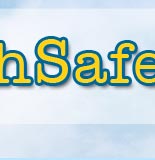|
Peer Warning Program
Peer Warning Program | Model School Protected Communication Policy
When students become aware of emotionally-charged or confusing information related to possible school violence, many do not know where to turn for help.
“What if I think I see a fellow student put a gun in his locker?”
“What if my friend gets mad and threatens to blow up the school?”
“What if I see a fellow student making a list of names?”
Should I tell someone? What if I’m mistaken? What if they find out I told? Frightened and uncertain, it is often easier to take no action rather than risk taking the wrong action. For students, an important element in an effective Peer Warning Program is the knowledge that there IS someone that they can turn to safely. This would be an adult in the building who will understand their dilemma and provide a secure, confidential outlet for their information. The Model School Protected Communication Policy describes just such an element. Schools should make adaptations to this model to meet their specific needs and, if necessary, allow the school legal counsel to review the final document. Staff Member | Examples
Model School Protected Communication Policy
The administrators, faculty, and students of ___________________ School agree that:
- Although it is very unlikely to happen, the potential for deadly, targeted violence exists in all schools, and;
- All individuals who enter this building and these grounds have the right to expect that they will be safe from any form of violence, and;
- Each individual plays a critical role in helping to provide the security necessary to ensure that everyone can remain free from being a victim of violence.
Therefore, in order for all individuals to be effective protectors of the safety and security of our school, the following shall be the official policy of ___________________ School:
Students
All students have the right to invoke what shall be known as Protected Communication. Under this policy, a student invoking this right is acknowledging that he or she has information that may affect the safety and security of one or more individuals in the building;
- “Protected Communication” is reserved only for those rare instances that involve the safety and security of the individuals in the school and not for less serious policy or rules violations;
- “Protected Communication” is proactive and is meant to prevent a potential tragedy; It is not to help solve an existing crime or problem;
- A student electing to invoke this right shall be guaranteed confidentiality in any school disciplinary procedure in this matter and freed from any public testimony unless ordered to do so by a court of law;
- A student electing to invoke this right shall be guaranteed freedom from any school-level disciplinary procedure resulting from this effort to prevent violence in the school;
- This freedom from disciplinary procedures guarantee does not extend to any violations of the criminal code that the student may be subsequently charged with;
Back to Top
Protected Communication Staff Member
Adults in the school designated to receive “Protected Communication” from students shall be identified by the principal. They voluntarily agree to participate in the following manner:
- The adult recipient of a “Protected Communication” shall affirm with the student that the communication is protected.
- If time permits, with the student’s approval, the adult recipient shall render the communication in writing, and it will be signed, and dated.
- The designated adult shall promptly provide the information only to the principal; no other individual shall be given the information without written consent of the student.
- The principal shall take appropriate steps, including gathering further information from the student.
- The principal may contact the legal authorities if he or she believes that the student may have violated the law.
The designated recipient of a “Protected Communication” is the holder of an important trust, and any willful, substantiated breach of that trust may result in disciplinary proceedings against that adult individual;
The following are examples of potential concerns that may be included under the “Protected Communication” policy:
- The student knows or believes someone has a gun, knife, or other deadly weapon in school.
- The student knows or believes someone has made a bomb or has called in a bomb threat.
- The student knows or believes someone has made a deadly violence threat against the school.
- The student knows or believes someone has created a “target list” of individuals in the school.
- The student knows or believes someone has threatened to “beat up” another student.
- The student knows or believes someone has threatened to commit suicide.
- The student is fearful of the unusual behavior of someone, though no clear threat was confirmed.
Example A:
Sara overheard two boys say that they were going to “have every news reporter in the country here and make Columbine seem like a tea party.” She knew one of the boys by name. He was a very popular junior. Sara immediately contacted Ms. Conlon, the school psychologist, who had been designated by the principal as a “Protected Communication Staff Member.” She asked for, and was granted, the right to “Protected Communication” by Ms. Conlon. She then told what she had heard. Ms. Conlon assured her of confidentiality, wrote down her statement, and they both signed it. Ms. Conlon immediately went to the principal with this information. Bombs were found at one of the boy’s home, and Sara was never involved from this point forward.
Example B:
James was changing for gym and saw what appeared to be a pistol in the book bag of a new student he did not know. After class, he approached Mr. Dawkins, a guidance counselor, who had been designated by the principal as a “Protected Communication Staff Member.” He asked if he could have “Protected Communication.” Mr. Dawkins said that if it related to the protection of student safety, he would grant it. James told him what he thought he saw. Mr. Dawkins assured him of confidentiality and informed the principal. Security contacted the student and searched the bag, but did not find a pistol. The student asked for the name of the person who was accusing him of having a pistol, but the staff members refused to reveal it.
The following are examples of potential concerns that are NOT included under the “Protected Communication” policy because they do apply to potential violence:.
- The student knows that someone is in possession of or is dealing drugs
- The student knows who vandalized the school building
- The student knows who stole school or personal property
- The student is aware of ongoing rules violations in the school
“Protected Communication” is proactive (prevention-oriented) and is concerned exclusively with safety and security matters. This does not preclude the school from establishing other policies and procedures for addressing crime and rules violation in the school setting. Students should be made aware that failure to report knowledge relating to a criminal violation may be a violation of the criminal code.
Back to
Top
|







